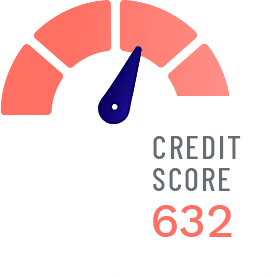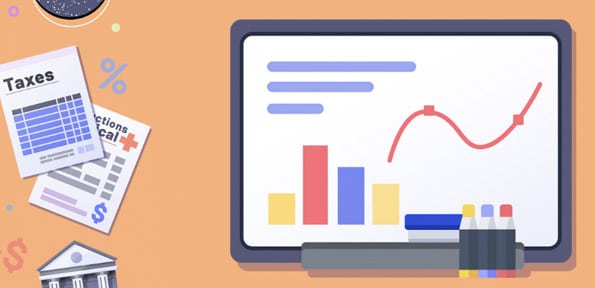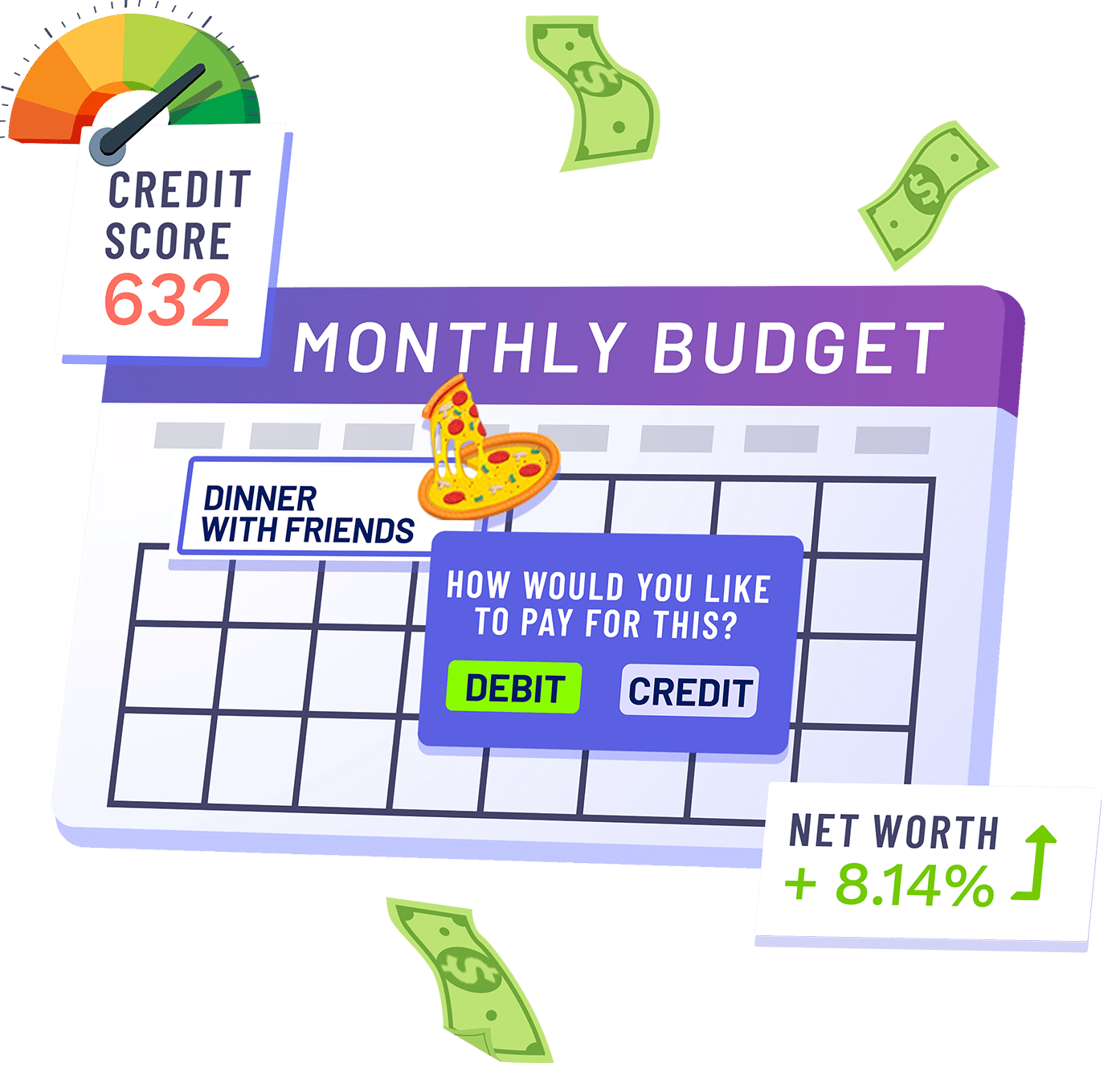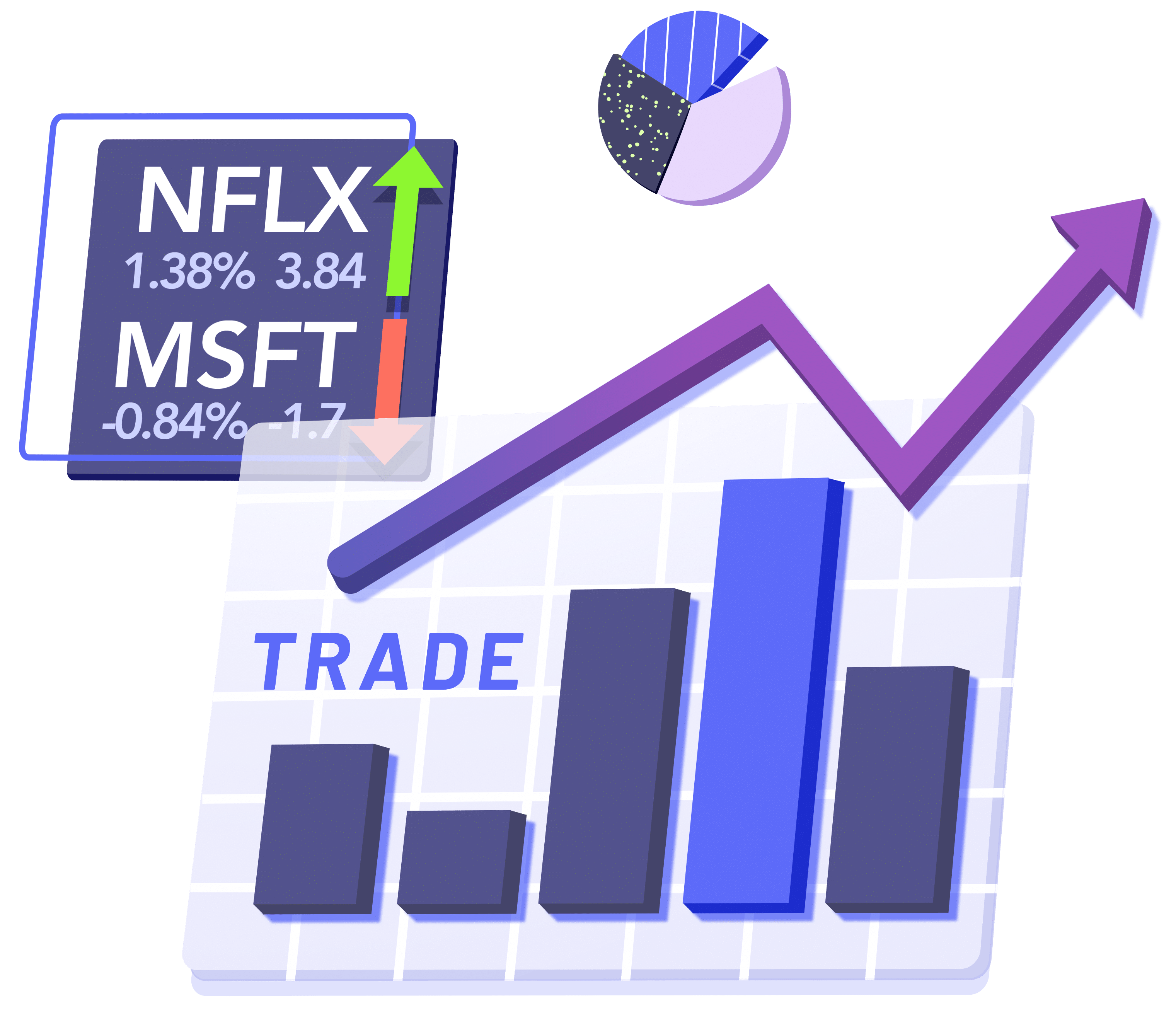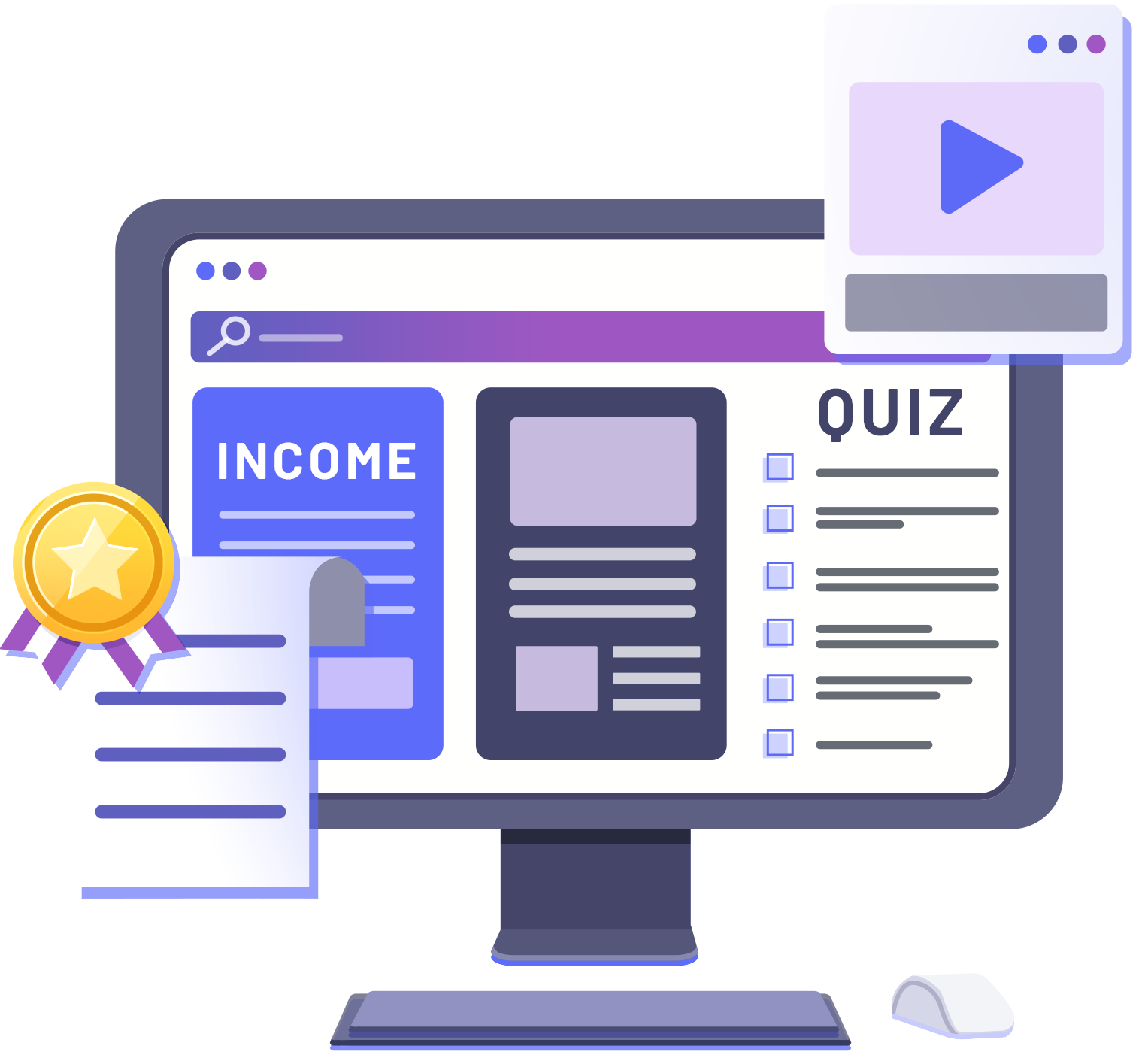| INCOME AND CAREERS |
| | | | | |
| Differentiate among the types of taxes and employee benefits. |
Lesson – Taxation Overview
Lesson – Income and Compensation
| | | | | |
| Differentiate between taxable and nontaxable income. |
Lesson – Payroll Best Practices
Lesson – Taxation Overview
| | | | | |
| Analyze the relationship between various careers and personal earning goals. |
Lesson – Career Development
Lesson – Work or Study
Lesson – Budgeting
| | | | | |
| Identify a career goal and develop a plan and timetable for achieving it, including educational/training requirements, costs, and possible debt. |
Lesson – Work or Study
Lesson – Student Loans
Lesson – Career Development
| | | | | |
| Analyze how the economic, social, and political conditions of a time period can affect the labor market. |
Lesson – The Business Cycle
Lesson – Labor and Productivity
| | | | | |
| Summarize the financial risks and benefits of entrepreneurship as a career choice. |
Lesson – Starting a Business
Lesson – Entrepreneurship
| | | | | |
| Analyze and critique various sources of income and available resources (e.g., financial assets, property, and transfer payments) and how they may substitute for earned income. |
Investing101 Certification
Lesson – What is Wealth?
Lesson – Building a diversified portfolio
Lesson – Investing Strategies
| | | | | |
| Analyze different forms of currency and how currency is used to exchange goods and services. |
Lesson – What is Money?
Lesson – International Trade
| | | | | |
| Analyze how personal and cultural values impact spending and other financial decisions. |
Budget Game – Core Component
| | | | | |
| Demonstrate how exemptions and deductions can reduce taxable income. |
Lesson – Common Tax Deductions
Lesson – Common Tax Additions
| | | | | |
| Explain the relationship between government programs and services and taxation. |
Lesson – Taxation Overview
Lesson – Unemployment and other programs
Lesson – Government impact on the economy
| | | | | |
| Explain how compulsory government programs (e.g., Social Security, Medicare) provide insurance against some loss of income and benefits to eligible recipients. |
Lesson – Unemployment and other programs
Lesson – Government impact on the economy
Lesson – Unemployment
Lesson – Labor and Productivity
| | | | | |
| Analyze the impact of the collective bargaining process on benefits, income, and fair labor practice. |
Lesson – Consumer rights and responsibilities
Lesson – Employer and Employee Rights and Responsibilities
| | | | | |
| MONEY MANAGEMENT |
Activity |
Long-Term Game |
Comprehensive Chapter |
Short Lesson |
Interactive Calculator |
Graded Assessment |
| Prioritize financial decisions by systematically considering alternatives and possible consequences. |
Lesson – Preparing for Retirement
Lesson – Preparing for Spending Shocks
Lesson – Family Planning
Lesson – Planning for Long Term Purchases
| | | | | |
| Compare strategies for saving and investing and the factors that influence how much should be saved or invested to meet financial goals. |
Budget Game – Core Component
Lesson – Building Wealth
Lesson – Pay Yourself First
Lesson – Budgeting
| | | | | |
| Construct a plan to accumulate emergency “rainy day” funds. |
Budget Game – Core Component
Lesson – Pay Yourself First
Lesson – Budgeting
| | | | | |
| Analyze how income and spending plans are affected by age, needs, and resources. |
Lesson – Budgeting and Spending Strategies
Lesson – Career Development
Lesson – Income and Compensation
| | | | | |
| Analyze how changes in taxes, inflation, and personal circumstances can affect a personal budget. |
Lesson – Inflation
Lesson – The Importance of Interest Rates
Lesson – Pay Yourself First
Lesson – Monetary Policy
| | | | | |
| Design and utilize a simulated budget to monitor progress of financial plans. |
Budget Game – Core Component
| | | | | |
| Explain the meaning of income tax, describe how it is calculated, and analyze its impact on one’s personal budget. |
Lesson – Tax Filing and the Form 1040
Lesson – When to hire a tax professional
Lesson – Spending and Savings Plans
| | | | | |
| Describe and calculate interest and fees that are applied to various forms of spending, debt, and saving. |
Activity – Use the Compound Interest Calculator
Activity – Use the Credit Card Payments Calculator
Activity – Use the Investment Return Calculator
| | | | | |
| Research the types and characteristics of various financial organizations in the community (e.g., banks, credit unions, check-cashing stores, et. al.). |
Lesson – Banks, Credit Unions, and Savings and Loans
| | | | | |
| Develop a plan that uses the services of various financial institutions to meet personal and family financial goals. |
Investing101 Certification
Lesson – What is a Brokerage?
Lesson – When to hire a tax professional
Lesson – Preparing for Retirement
Lesson – Banks, Credit Unions, and Savings and Loans
| | | | | |
| CREDIT AND DEBT MANAGEMENT |
Activity |
Long-Term Game |
Comprehensive Chapter |
Short Lesson |
Interactive Calculator |
Graded Assessment |
| Compare and contrast the financial benefits of different products and services offered by a variety of financial institutions. |
Lesson – Banks, Credit Unions, and Savings and Loans
| | | | | |
| Compare and compute interest and compound interest and develop an amortization table using business tools. |
Activity – Use the Compound Interest Calculator
Activity – Use the Credit Card Payments Calculator
Lesson – Importance of Interest Rates
| | | | | |
| Compute and assess the accumulating effect of interest paid over time when using a variety of sources of credit. |
Activity – Use the Credit Card Payments Calculator
Lesson – Managing Debt
| | | | | |
| Compare and contrast the advantages and disadvantages of various types of mortgages. |
Lesson – Mortgages
| | | | | |
| Analyze the information contained in a credit report and explain the importance of disputing inaccurate entries. |
Lesson – Credit Reports
| | | | | |
| Explain how predictive modeling determines “credit scores.” |
Lesson – Credit Reports
| | | | | |
| Analyze the rights and responsibilities of buyers and sellers under consumer protection laws. |
Lesson – Consumer rights and responsibilities
| | | | | |
| Identify the types and characteristics of predatory lending practices (e.g., payday loans, car title loans, high-risk mortgages). |
Lesson – Short-Term Financing
| | | | | |
| Evaluate the implications of personal and corporate bankruptcy for self and others. |
Lesson – Bankruptcy
| | | | | |
| PLANNING, SAVING, AND INVESTING |
Activity |
Long-Term Game |
Comprehensive Chapter |
Short Lesson |
Interactive Calculator |
Graded Assessment |
| Calculate short- and long-term returns on various investments (e.g., stocks, bonds, mutual funds, IRAs, deferred pension plans, and so on). |
Investing101 Certification
Activity – Use the Investment Return Calculator
| | | | | |
| Assess the impact of inflation on economic decisions and lifestyles. |
Lesson – Inflation
| | | | | |
| Summarize how investing builds wealth and assists in meeting long- and short-term financial goals. |
Lesson – What is Wealth?
Lesson – Building Wealth
| | | | | |
| Assess factors that influence financial planning. |
Lesson – Investing Strategies
Lesson – Preparing for Retirement
Lesson – Life Insurance
| | | | | |
| Justify the use of savings and investment options to meet targeted goals. |
Lesson – Pay Yourself First
| | | | | |
| Analyze processes and vehicles for buying and selling investments. |
Stock Game – Core Component
Investing101 Certification
Lesson – Getting (and understanding) stock quotes
Lesson – What is a Mutual Fund?
Lesson – What are Bonds?
| | | | | |
| Explain the risk, return, and liquidity of various savings and investment alternatives. |
Lesson – Investing Strategies
Investing101 Certification
| | | | | |
| Explain how government and independent financial services and products are used to achieve personal financial goals. |
Lesson – Preparing for Retirement
Lesson – Income and Compensation
| | | | | |
| Relate savings and investment results to achievement of financial goals. |
Activity – Use the Investment Return Calculator
Activity – Use the Net Present Value Calculator
Activity – Use the Saving to be a Millionaire Calculator
| | | | | |
| Differentiate among various investment products and savings vehicles and how to use them most effectively. |
Stock Game – Core Component
Investing101 Certification
Lesson – What is a Stock?
Lesson – What is an ETF?
Lesson – What is a Mutual Fund?
Lesson – What are Bonds?
| | | | | |
| Assess the role of revenue-generating assets as mechanisms for accruing and managing wealth. |
Lesson – Building Wealth
Lesson – What is Wealth?
| | | | | |
| Compare and contrast the past and present role of government in the financial industry and in the regulation of financial markets. |
Lesson – Government impact on the economy
Lesson – Fiscal Policy Explained
Lesson – Monetary Policy
| | | | | |
| Determine the impact of various market events on stock market prices and on other savings and investments. |
Lesson – Stock Market Crash of 1929
Lesson – Understanding Price Movements
| | | | | |
| Evaluate how taxes affect the rate of return on savings and investments. |
Lesson – Taxation Overview
| | | | | |
| Analyze how savings, retirement plans, and other investment options help to shift current income for purposes of tax reporting and filing. |
Lesson – Preparing for Retirement
Lesson – Preparing for Spending Shocks
Lesson – Planning for Long Term Purchases
| | | | | |
| BECOMING A CRITICAL CONSUMER |
Activity |
Long-Term Game |
Comprehensive Chapter |
Short Lesson |
Interactive Calculator |
Graded Assessment |
| Evaluate the appropriateness of different types of monetary transactions (e.g., electronic transfer, check, certified check, money order, gift card, barter) for various situations. |
Lesson – Debit Cards
Lesson – Credit Cards
Lesson – Automatic Payments
| | | | | |
| Analyze and apply multiple sources of financial information when prioritizing financial decisions. |
Lesson – Researching Spending
Investing101 Certification
| | | | | |
| Determine how objective, accurate, and current financial information affects the prioritization of financial decisions. |
Lesson – What is an Income Statement?
Lesson – What is a Balance Sheet?
Lesson – What Is A Cash Flow Statement
Lesson – Asset Valuation
| | | | | |
| Evaluate how media, bias, purpose, and validity affect the prioritization of consumer decisions and spending. |
Lesson – Spending and Savings Plans
Lesson – Pay Yourself First
Lesson – Researching Spending
| | | | | |
| Evaluate business practices and their impact on individuals, families, and societies. |
Lesson – Social Responsibility In Management
Lesson – The Product Lifecycle
Lesson – The Business Cycle
| | | | | |
| Evaluate written and verbal contracts for essential components and for obligations of the lender and borrower. |
Lesson – What makes a contract valid?
| | | | | |
| Apply specific consumer protection laws to the issues they address. |
Lesson – Consumer rights and responsibilities
| | | | | |
| Relate consumer fraud, including online scams and theft of employee time and goods, to laws that protect consumers. |
Lesson – Protecting Against Fraud
| | | | | |
| Determine when credit counseling is necessary and evaluate the resources available to assist consumers who wish to use it. |
Lesson – Managing Debt
Lesson – Debt Management Services
Lesson – Consolidating Debt
Lesson – Debt Negotiation
| | | | | |
| Determine reasons for the increase of identity theft worldwide and evaluate the extent to which victims of identity theft are successful in fully restoring their personal identities. |
Lesson – Protecting Against Fraud
| | | | | |
| CIVIC FINANCIAL RESPONSIBILITY |
Activity |
Long-Term Game |
Comprehensive Chapter |
Short Lesson |
Interactive Calculator |
Graded Assessment |
| Relate a country’s economic system of production and consumption to building personal wealth and achieving societal responsibilities. |
Lesson – Labor and Productivity
| | | | | |
| Assess the impact of emerging global economic events on financial planning. |
Lesson – The Business Cycle
Lesson – International trade
| | | | | |
| Analyze how citizen decisions and actions can influence the use of economic resources to achieve societal goals and provide individual services. |
Lesson – Analyzing Consumer Behavior
Lesson – Supply and Demand Examples in the Stock Market
Lesson – Consumer rights and responsibilities
| | | | | |
| Compare and contrast the role of philanthropy, volunteer service, and charities in community development and quality of life in a variety of cultures. |
Lesson – Charitable Giving
Lesson – Types of Companies
| | | | | |
| Explain the concept and forms of taxation and justify the use of taxation to fund public activities and initiatives. |
Lesson – Taxation Overview
Lesson – Monetary Policy
| | | | | |
| INSURING AND PROTECTING |
Activity |
Long-Term Game |
Comprehensive Chapter |
Short Lesson |
Interactive Calculator |
Graded Assessment |
| Analyze risks and benefits in various financial situations. |
Stock Game – Core Component
Budget Game – Core Component
Lesson – Risk
Lesson – Opportunity Cost
| | | | | |
| Differentiate between property and liability insurance protection. |
Lesson – Renter’s Insurance
Lesson – Home Owner’s Insurance
Lesson – Rental Agreements and Homeowner’s Associations
| | | | | |
| Compare the cost of various types of insurance (e.g., life, homeowners, motor vehicle) for the same product or service, given different liability limits and risk factors. |
Lesson – Renter’s Insurance
Lesson – Home Owner’s Insurance
Lesson – Rental Agreements and Homeowner’s Associations
Lesson – Car Insurance
Lesson – Life Insurance
Lesson – Health Insurance
| | | | | |
| Evaluate individual and family needs for insurance protection using opportunity-cost analysis. |
Lesson – Life Insurance
Lesson – Health Insurance
Lesson – Family Planning
| | | | | |
| Differentiate the costs and benefits of renter’s and homeowner’s insurance. |
Lesson – Renter’s Insurance
Lesson – Home Owner’s Insurance
Lesson – Rental Agreements and Homeowner’s Associations
| | | | | |
| Explain how to self-insure and how to determine when self-insurance is appropriate. |
Lesson – Renter’s Insurance
Lesson – Home Owner’s Insurance
Lesson – Health Insurance
| | | | | |
| Determine when and why it may be appropriate for the government to provide insurance coverage, rather than private industry. |
Lesson – Health Insurance
| | | | | |


